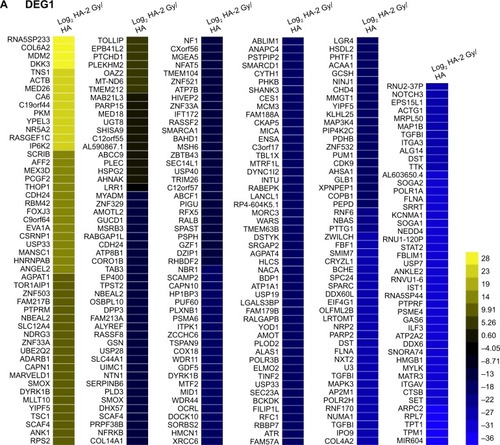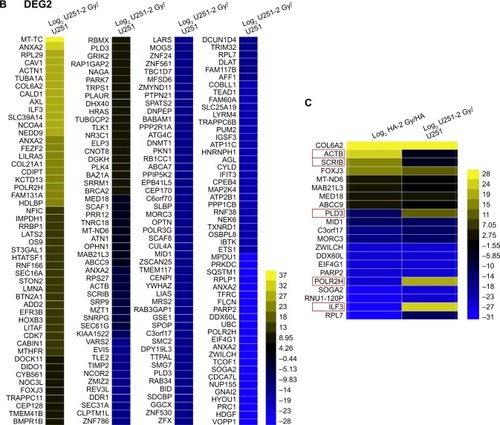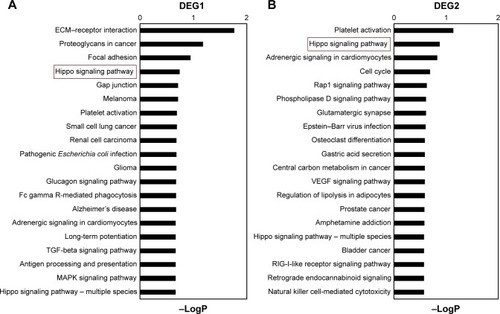Figures & data
Figure 1 Experimental design for comparative transcriptome analysis.
Abbreviations: HA, human astrocyte; DEG, differentially expressed gene.

Figure 2 Differentially expressed mRNAs between radiation-treated and nontreated HA (A) and U251 (B) cells. (C) Genes regulated by radiation in both HA and U251 cells. Genes oppositely regulated by radiation are highlighted.


Figure 3 GO analysis of DEGs between radiation-treated and nontreated HA and U251 cells.
Abbreviations: GO, gene ontology; DEG, differentially expressed gene; HA, human astrocyte.

Figure 4 Pathway analysis of DEGs between radiation-treated and nontreated HA and U251 cells.
Abbreviations: DEG, differentially expressed gene; HA, human astrocyte; ECM, extracellular matrix.

Figure 5 Suppression of Hippo/YAP signaling pathway induces radiation resistance in glioma cells.
Abbreviations: HA, human astrocyte; OD, optical density; P-YAP, phosphorylated YAP; shcon, sh-control.

